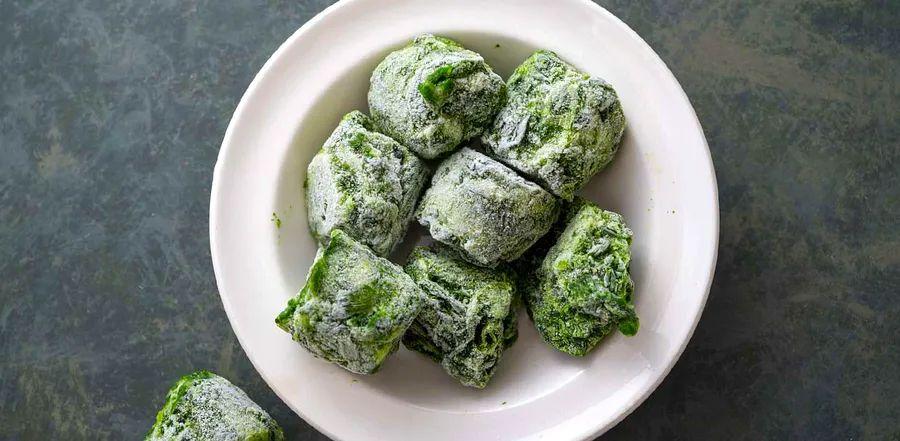4 Foolproof Ways to Freeze Spinach

Spinach is one of the most popular leafy greens. Not only is it packed with nutrients, but its versatility makes it a perfect addition to salads, able to hold up to hearty dressings, and it works well in a variety of dishes.
Spinach can be added to just about anything: soups, pastas, smoothies, casseroles, quiches, baked goods, and sandwiches—it truly has endless possibilities.
Spinach doesn’t last long on the shelf, but if you’ve ever wondered if it can be frozen for future use, the answer is absolutely yes.
How to Freeze Fresh Spinach
There are 4 methods for freezing spinach. The most popular and reliable is the blanching method, but you can choose the best one depending on how you plan to use the spinach and how much time you have available.
Freeze Fresh (Unwashed)
Freezing spinach without washing it can preserve its freshness for up to 6 months. However, it will likely become a bit slimy after thawing. This method works best if you're using the spinach for cooking, as the texture won’t matter as much.
- There's just one step here. Simply put the spinach leaves in freezer bags, squeeze as much air out of the bags as possible, and freeze.
Wash and Freeze
For this method, you’ll need to thaw the spinach for a few hours, then squeeze out the excess water before adding it to your dishes.
- Wash the spinach well. Pat or spin it dry in a salad spinner, being sure to remove as much water as possible.
- Lay the spinach in flat layers in freezer zip-top bags. Press down. Repeat.
- When the bags are full, squeeze out as much air as possible, seal, and place in the freezer.

Get the recipe: Spinach Enchiladas
Puree
This method is perfect when you need spinach in a liquid form, such as for smoothies, blended soups, or sauces. It helps integrate the spinach seamlessly into your dish.
- Blend fresh spinach in a blender until desired thickness.
- Pour puree into ice cube trays.
- Freeze.
- Transfer frozen solid cubes to zip-top freezer bags for storage and ease of use.
Blanch
Blanching spinach before freezing helps preserve its vibrant color and flavor by stopping the enzymes that cause the leaves to decay. This method offers the longest storage time—up to 14 months—and makes it quick and easy to incorporate spinach into various dishes.
- Bring a large pot of water to a boil, and add pre-washed spinach leaves to the water.
- Stir and cook for two minutes at a rolling boil.
- Transfer the leaves using a slotted spoon to large bowl filled with water and ice. Keep the spinach submerged for about 2 minutes to stop the cooking.
- Dry the spinach thoroughly by squeezing the spinach to get ALL of the water out. It's best to bundle batches of the leaves in cheesecloth and wring out the cloth into the sink.
- Pack the spinach into freezer bags, get as much air out as possible, seal, and freeze. Portioning the spinach into small, single-serve bags is even better.
How to Use Frozen Spinach
Cooking with frozen spinach is a breeze, especially if you’ve used the blanching method. Just remember that thawed spinach will be softer than fresh, so it’s best suited for cooked dishes like soups, stews, pies, or biscuits (if you've squeezed out the moisture).
Blend puree cubes into a smoothie, toss them in a pot for soup, stew, or sauce, or stir them into the water when cooking rice, quinoa, or barley for an added nutritional boost and burst of flavor.
Frozen, unthawed spinach can be added directly to simmering soup or layered in a casserole before baking—just break up any clumps if needed.

1

2

3

4

5
Evaluation :
5/5